Best Java API Guides to Buy in December 2025
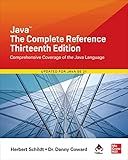
Java: The Complete Reference, Thirteenth Edition


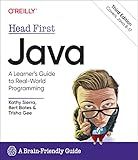
Head First Java: A Brain-Friendly Guide



Java for Beginners: Build Your Dream Tech Career with Engaging Lessons and Projects


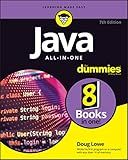
Java All-in-One For Dummies


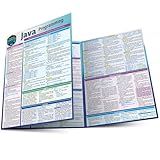
Java Programming Language: a QuickStudy Laminated Reference Guide


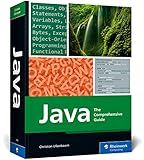
Java: The Comprehensive Guide to Java Programming for Professionals (Rheinwerk Computing)


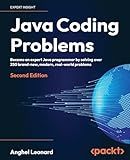
Java Coding Problems: Become an expert Java programmer by solving over 250 brand-new, modern, real-world problems


Java's built-in APIs provide a wide range of functionality that developers can use in their applications. These APIs cover a variety of areas such as networking, file handling, data manipulation, and much more.
To use Java's built-in APIs, you first need to import the appropriate packages into your code. These packages contain the classes and interfaces that provide the functionality you need. For example, if you want to work with dates and times, you would import the java.time package.
Once you have imported the necessary packages, you can create instances of the appropriate classes and use their methods to perform the desired operations. For example, if you want to read data from a file, you would create a FileReader object and use its read method to read the file.
It's important to refer to the documentation for the specific API you are using to understand how to use it correctly. The documentation will provide information on the classes and methods available, as well as examples of how to use them.
Overall, Java's built-in APIs are a powerful and versatile tool that can greatly simplify the development process by providing pre-built functionality for common tasks. By familiarizing yourself with these APIs and understanding how to use them effectively, you can save time and effort in your programming projects.
How to sort an array using Java's built-in APIs?
To sort an array using Java's built-in APIs, you can use the Arrays.sort() method. Here's an example:
import java.util.Arrays;
public class SortArray { public static void main(String[] args) { int[] array = {5, 2, 7, 3, 1};
// Sort the array
Arrays.sort(array);
// Print the sorted array
for (int num : array) {
System.out.print(num + " ");
}
}
}
In this example, we have an array of integers that we want to sort. We use the Arrays.sort() method to sort the array in ascending order. Finally, we iterate through the sorted array and print out each element.
How to use Java's built-in APIs for string manipulation?
Java provides several built-in APIs for string manipulation. Some of the commonly used methods are as follows:
- To concatenate two strings:
String str1 = "Hello "; String str2 = "World"; String result = str1.concat(str2); System.out.println(result); // Output: "Hello World"
- To get the length of a string:
String str = "Hello"; int length = str.length(); System.out.println(length); // Output: 5
- To convert a string to uppercase or lowercase:
String str = "Hello"; String upperCase = str.toUpperCase(); String lowerCase = str.toLowerCase(); System.out.println(upperCase); // Output: "HELLO" System.out.println(lowerCase); // Output: "hello"
- To check if a string contains a substring:
String str = "Hello World"; boolean contains = str.contains("World"); System.out.println(contains); // Output: true
- To replace a substring with another string:
String str = "Hello World"; String replacedStr = str.replace("World", "Java"); System.out.println(replacedStr); // Output: "Hello Java"
These are just a few examples of the many built-in APIs that Java provides for string manipulation. You can explore the Java documentation for more information on string manipulation methods.
What is the Java GSON API and how to use it?
GSON is a Java API developed by Google for converting Java objects to JSON (JavaScript Object Notation) and vice versa. It allows you to serialize Java objects into JSON format and deserialize JSON data back into Java objects.
To use the GSON library in your Java application, you need to first include the GSON library in your project. You can download the GSON library from the Maven repository or add it as a dependency in your build tool (e.g. Maven, Gradle).
Once you have added the GSON library to your project, you can use it to convert Java objects to JSON and vice versa using the following steps:
- Create a Gson object:
Gson gson = new Gson();
- Convert a Java object to JSON:
MyObject obj = new MyObject(); String json = gson.toJson(obj); System.out.println(json);
- Convert JSON to a Java object:
String json = "{\"key\": \"value\"}"; MyObject obj = gson.fromJson(json, MyObject.class);
In the above example, MyObject is a Java class that you want to serialize and deserialize. The toJson() method converts a Java object into its JSON representation, while the fromJson() method converts a JSON string into a Java object of the specified class.
Using the GSON library, you can easily serialize and deserialize Java objects to and from JSON format, making it easier to work with JSON data in Java applications.
What is the Java Apache Commons API and how to use it?
The Apache Commons API is a collection of reusable java components that provide a wide range of functionality such as file manipulation, collections manipulation, database connection pooling, email sending, and more. Apache Commons aims to provide a set of utilities and components that simplify common programming tasks in Java.
To use the Apache Commons API in your Java project, you need to add the Apache Commons library to your project's build path. You can do this by downloading the Apache Commons library from the official Apache Commons website and adding it to your project as an external JAR file.
Once you have added the Apache Commons library to your project, you can start using the various components and utilities provided by the API. You can import the necessary classes from the Apache Commons library and use them in your code to perform tasks such as reading and writing files, working with collections, sending emails, etc.
Here's an example of how to use the Apache Commons IO library to read a file in Java:
import org.apache.commons.io.FileUtils;
import java.io.File; import java.io.IOException;
public class FileReadingExample {
public static void main(String\[\] args) {
File file = new File("file.txt");
try {
String content = FileUtils.readFileToString(file, "UTF-8");
System.out.println("File content: " + content);
} catch (IOException e) {
e.printStackTrace();
}
}
}
In this example, we are using the FileUtils class from the Apache Commons IO library to read the content of a file named "file.txt" and print it to the console.
